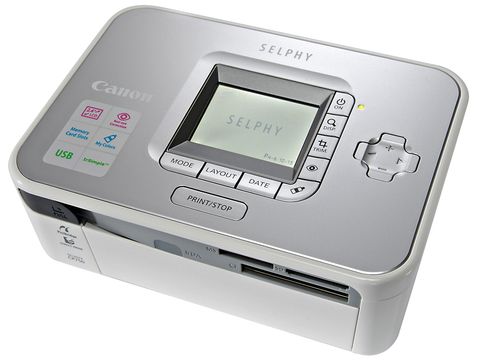TechRadar Verdict
The colour is off on prints - and it shows. We struggled with the onboard menu too
Pros
- +
Quick prints
LCD screen
Multitude of connection options
Cons
- -
Over-saturated prints
Random spots of odd colour
Stingy ink and paper starter pack
Why you can trust TechRadar
When you have a company like Canon producing cameras as good as the IXUS range, you would naturally bank on its photo printers having some kind of magical gizmology too.
However, for our money, HP and Epson have always trumped Canon on both print quality and features, certainly over the last two years. Lens and CCD know-how doesn't necessarily translate into winning nozzles and ink.
This Canon Selphy CP750 maintains the status quo. It's an update to Canon's range of dye-sub photo printers, but one that still produces average prints.
There are two key problems: the colours veer towards over-saturation, and our prints came out spotted with tiny blotches of wild discolouration. We put the second fault down to dust getting onto the paper during the printing, perhaps inside the machine.
Neither problem stopped proud parents cooing over shots of their children, but next to an HP Photosmart A618 the photos look shoddy.
In the box you get a starter pack of the single ink cartridge and some paper. It's a miserly pack, as you only get five prints' worth of ink and paper. A box of 36 postcard-sized sheets and a cartridge good for 36 prints will cost you £12.99 from Jessops - that's 36p a print. However, if you opt for the 100 pack, the price drops down below 20p.
The printer connects to a Mac via a boxed USB cable. You get onboard slots for all the common memory cards, and an optional dongle for printing wirelessly (from a phone, for instance). It's PictBridge-enabled, as all photo printers are these days, and there's even a retractable USB cable built into the shell to connect directly to a camera. Print times averaged 59 seconds.
The onboard menu system is a low point. It's clumsy to navigate and lacks a clear explanation of what each feature does. Comparatively, we find the HP or Epson menu systems a breeze.
Tech.co.uk was the former name of TechRadar.com. Its staff were at the forefront of the digital publishing revolution, and spearheaded the move to bring consumer technology journalism to its natural home – online. Many of the current TechRadar staff started life a Tech.co.uk staff writer, covering everything from the emerging smartphone market to the evolving market of personal computers. Think of it as the building blocks of the TechRadar you love today.

